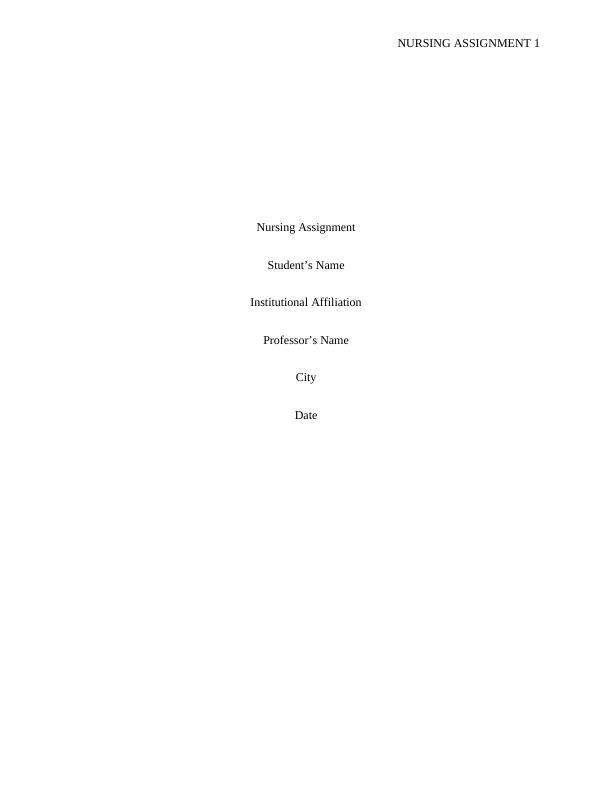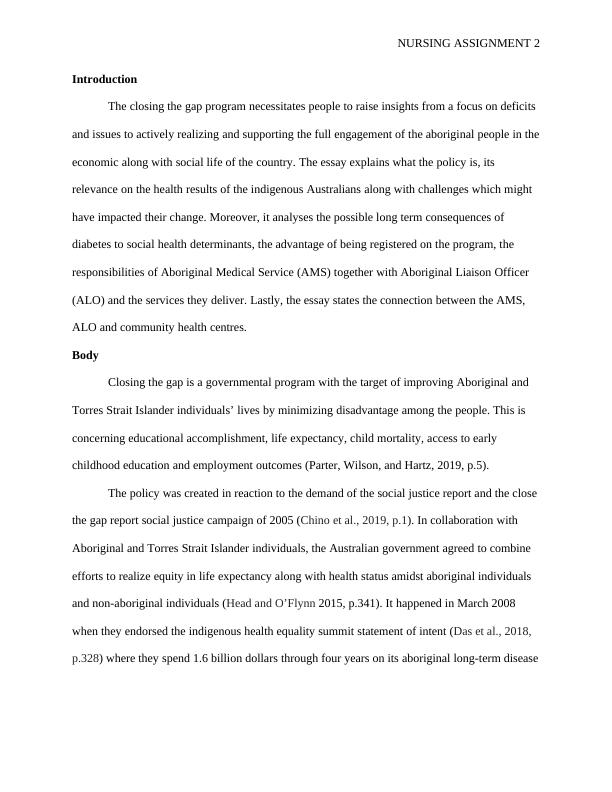Closing the Gap Program and its Impact on Indigenous Health Outcomes
Exploring the impact of the ‘Closing the Gap’ policy on Aboriginal & Torres Strait Islander People’s health outcomes.
10 Pages2832 Words162 Views
Added on 2022-10-01
About This Document
This essay explains what the policy is, its relevance on the health results of the indigenous Australians along with challenges which might have impacted their change. Moreover, it analyses the possible long term consequences of diabetes to social health determinants, the advantage of being registered on the program, the responsibilities of Aboriginal Medical Service (AMS) together with Aboriginal Liaison Officer (ALO) and the services they deliver. Lastly, the essay states the connection between the AMS, ALO and community health centres.
Closing the Gap Program and its Impact on Indigenous Health Outcomes
Exploring the impact of the ‘Closing the Gap’ policy on Aboriginal & Torres Strait Islander People’s health outcomes.
Added on 2022-10-01
ShareRelated Documents
End of preview
Want to access all the pages? Upload your documents or become a member.
Aboriginal Health Gap Closing
|9
|2583
|35
Closing the Gap Policy and its Significance to Indigenous Australians
|9
|2301
|364
Closing the Gap Policy and its Impact on Aboriginal and Torres Strait Islander Health
|10
|2527
|101
Closing The Gap: A Strategy for Reducing Child Mortality Among Aboriginal and Torres Strait Islander Australians
|8
|2101
|259
Closing the Gap Policy & Its Impacts in Australia
|8
|2421
|292
CVD Health Promotion Amongst aboriginal Report 2022
|10
|2850
|24



